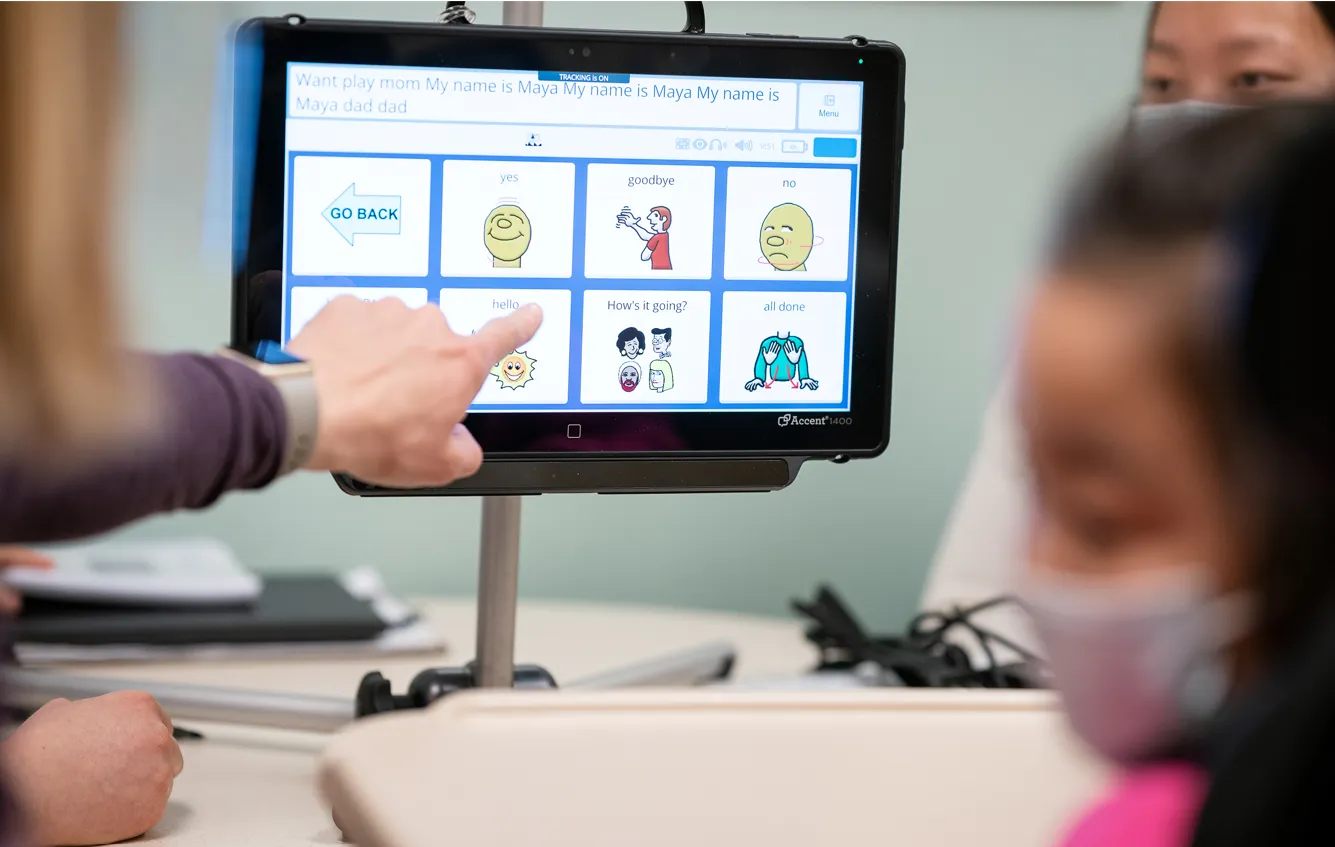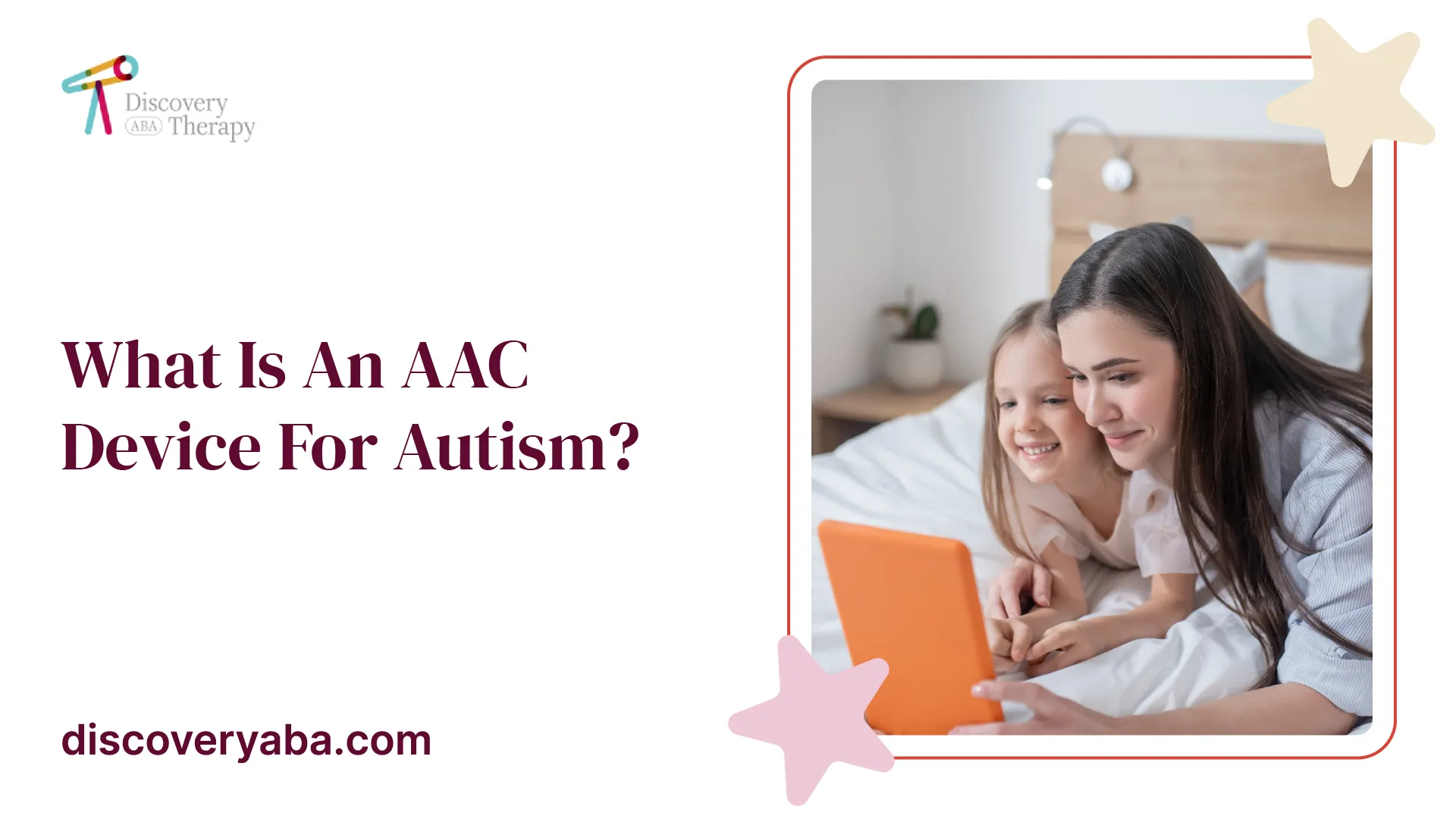What Is An AAC Device For Autism?
AAC devices use various forms of technology, such as computers, tablets, or smartphones, to help users communicate.


What Is An AAC Device?
AAC devices use various forms of technology, such as computers, tablets, or smartphones, to help users communicate.
People with autism may have trouble communicating effectively, which makes it hard for them to express their thoughts and feelings. Fortunately, there are assistive technologies available to help people with autism overcome these challenges. One such technology is the Augmentative and Alternative Communication (AAC) device.

AAC is a set of communication methods used to supplement or replace speech or writing for people with impairments in the production or comprehension of spoken or written language.
AAC devices can range from simple picture boards to sophisticated speech-generating devices (SGD).
An AAC device for autism is specifically designed to help children and adults with autism communicate with others. These devices use visual aids, such as pictures or symbols, to help the user communicate their needs and wants.
Some devices also have text-to-speech software, which allows the user to type out what they want to say, and the device will speak it aloud.
AAC devices for autism can be life-changing for those who use them. They allow users to communicate effectively, express themselves, and participate in social interactions.
They also help to reduce frustration and anxiety, which can be common in people with ASD who struggle to communicate verbally.
There are many types of AAC devices available for people with autism. Some of the most common types include:
- Picture boards: These are simple boards with pictures or symbols that the user can point to in order to communicate. They are often used with children who are just starting to learn to communicate.
- Voice output communication aids (VOCAs): These are electronic devices that use synthesized or recorded speech to communicate. They may have a keyboard, touch screen, or other input options.
- Speech-generating devices (SGDs): These devices are similar to VOCAs, but they also have the ability to generate speech based on text input. They may also have other features, such as environmental controls or internet connectivity.
- Computer-based AAC: These systems use software on a computer or tablet to provide communication support. They may have a variety of input options, such as a touch screen, keyboard, or mouse.
Choosing the right AAC device for an individual with autism depends on their communication needs and abilities. It's important to work with a speech-language pathologist or other qualified professional to assess the user's needs and recommend an appropriate device.
In addition to helping with communication, AAC devices for autism can also have other benefits.
They can help to promote social interaction, increase participation in activities, and improve academic skills. They can also help to reduce challenging behaviors that may be related to frustration or communication difficulties.
Benefits Of AAC Devices For Autistic Individuals
AAC devices for autism have numerous benefits for individuals who use them. These devices not only help with communication but also aid in promoting social interaction, increasing participation in activities, and improving academic skills.
One significant benefit of AAC devices is that they can increase an individual's independence. With the ability to communicate their needs and wants effectively, users can become more self-reliant and confident in their abilities. This can lead to improved self-esteem and a greater sense of control over their lives.
Another advantage of using AAC devices is that they can help reduce challenging behaviors associated with frustration or communication difficulties.
For example, if an individual is unable to express themselves verbally, they may resort to behaviors such as hitting or throwing objects out of frustration. By providing an alternative means of communication, AAC devices can help prevent these types of behaviors from occurring.
AAC devices for autism can also improve social interactions by helping users better understand social cues and engage in conversation. Many AAC devices incorporate visual aids, such as pictures or symbols, which can be particularly helpful for individuals with autism who may struggle with verbal communication.
In addition to these benefits, AAC devices can also improve academic performance by allowing students to participate more fully in classroom activities and discussions.
By being able to communicate their thoughts and ideas effectively, students are better able to engage with the material and demonstrate their knowledge.
Overall, AAC devices for autism are a valuable tool that can significantly improve the quality of life for individuals who use them. From increased independence to improved social interactions and academic performance, the benefits of these devices are clear.
AAC Myths and Misconceptions
There are many myths and misconceptions surrounding AAC devices for autism. One common myth is that using an AAC device will prevent individuals with autism from ever learning to speak. However, research has shown that the use of AAC devices can actually improve speech development in some cases.
Another misconception is that AAC devices are only for nonverbal individuals with autism.
While these devices can be particularly helpful for those who have difficulty communicating verbally, they can also be useful for individuals who have limited verbal skills or struggle with certain aspects of communication.
Some people also believe that using an AAC device is a sign of weakness or failure on the part of the individual with autism or their caregivers. However, this could not be further from the truth.
Using an AAC device is simply a different way of communicating, and it can provide numerous benefits for individuals with autism.
It's important to dispel these myths and misconceptions about AAC devices so that individuals and families affected by autism can make informed decisions about their communication needs.
By understanding the true benefits of these devices, we can help ensure that everyone has access to the tools they need to communicate effectively and live fulfilling lives.
Does Insurance Cover AAC Devices?
AAC devices can be expensive, and many families may be concerned about the cost of these devices. One question that often arises is whether insurance covers the cost of AAC devices for autism.
The answer to this question varies depending on the individual's insurance policy and the specific device being considered. Some insurance policies may cover all or part of the cost of an AAC device, while others may not cover it at all.
For those who are concerned about insurance coverage, it's important to check with their insurance provider to determine what is covered under their policy.
In some cases, a letter of medical necessity from a healthcare provider may be required in order for insurance to cover the cost of an AAC device.
It's also worth noting that there are organizations and programs that may provide financial assistance for AAC devices for autism. For example, some non-profit organizations offer grants or other forms of financial support to help families pay for these devices.
Despite the potential challenges associated with obtaining funding for AAC devices, it's important to consider the long-term benefits that these devices can provide. For many individuals with autism, an AAC device can significantly improve their quality of life and help them better communicate with those around them.
How Much Do AAC Devices Cost?
The cost of an AAC device for autism can vary widely depending on the type of device and its features. Simple picture boards may cost a few hundred dollars, while more complex speech-generating devices can cost several thousand dollars.
In addition to the initial cost of the device, there may be ongoing costs associated with maintenance, repairs, and software updates. It's important to factor these costs into consideration when deciding which device to purchase.
While the cost of AAC devices can be a concern for many families, it's worth noting that some insurance policies may cover all or part of the cost. Additionally, there are organizations and programs that offer financial assistance for those who need help paying for these devices.
Despite the potential costs associated with AAC devices, they can be life-changing for individuals with autism. These devices provide a means of communication that may otherwise be unavailable, allowing users to express themselves effectively and participate more fully in social interactions and activities.
Summary
In conclusion, an AAC device for autism is a powerful tool that can help children and adults with ASD communicate effectively and participate in social interactions.
These devices use visual aids and/or speech-generating technology to supplement or replace spoken language.
There are many types of AAC devices available, and the right one depends on the individual's needs and abilities. Working with a qualified professional can help to ensure that the user gets the most benefit from their AAC device.
Does Your Child Have An Autism Diagnosis?
Learn More About How ABA Therapy Can Help
Find More Articles
Contact us
North Carolina, Nevada, Utah, Virginia
New Hampshire, Maine
Arizona, Colorado, Georgia, New Mexico, Oklahoma, Texas
.avif)




































































































